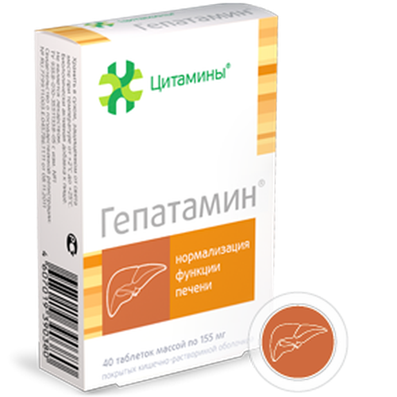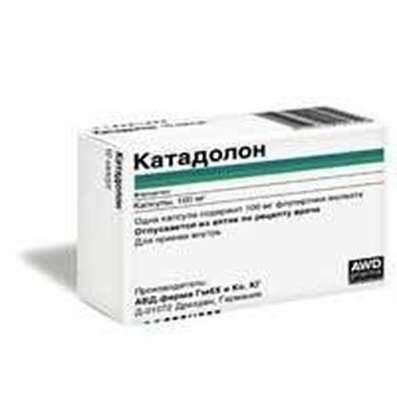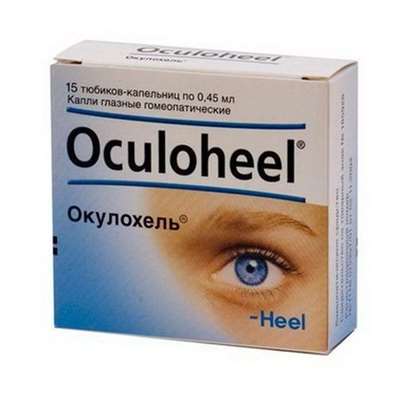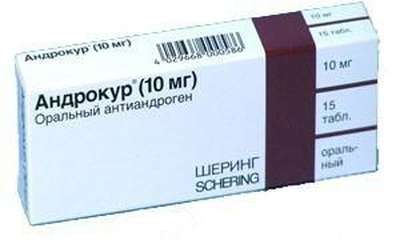Instruction for use: Cytoflavin Solution
I want this, give me price
Solution for intravenous administration
Trade name of the drug – Cytoflavin
Name of grouping: Inosine, Nicotinamide, Riboflavin, Succinic acid
Active substance: succinic acid - 100 g Nicotinamide - 10 g, Riboxin (inosine) - 20 g of riboflavin phosphate sodium (riboflavin) - 2 g;
Excipients: N-methylglucamine (meglumine) - 165 g, Sodium hydroxide - 34 g, Water for injection - up to 1.0 liters.
Description:
transparent liquid of yellow color.
Dosage Form: Solution for intravenous administration
Pharmacotherapeutic group: metabolic agent.
ATX code: N07XX
Pharmacological Properties of CytoflavinPharmacodynamics
Pharmacological effects are caused by the combined action of a part of the drug Cytoflavin components.
Cytoflavin intensifies the aerobic glycolysis, leading to the activation of glucose utilization and fatty acid β-oxidation, and also stimulates the synthesis of γ-aminobutyric acid in neurons.
Cytoflavin increases the stability of the membranes of nerve and glial cells to ischemia, resulting in a decrease in the concentration of proteins neurospecifical characterizing the level of degradation of the main structural components of the nervous tissue.
Cytoflavin improves coronary and cerebral blood flow, activates metabolic processes in the central nervous system, restores impaired consciousness, promotes regression of neurological symptoms and improving cognitive functions of the brain. It has a rapid awakening effect in postanesthetic oppression of consciousness.
In applying the drug Cytoflavin in the first 12 hours after the onset of stroke observed beneficial for ischemic and necrotic processes in the affected area (reduction of the hearth), recovery of neurological status and reduction of disability in a remote period.
Pharmacokinetics
With intravenous infusion at a rate of about 2 ml / min (in terms of undiluted Citoflavin) succinic acid and inosine are utilized almost instantly and are not detected in the blood plasma.
Succinic acid: peak concentration is determined within the first minute after administration to a further rapid decrease in cumulative and without returning it to the level of background values as a result of enzymatic breakdown to carbon dioxide and water. Inosine is metabolized in the liver to form inosine monophosphate, followed by its oxidation to uric acid. In small quantities excreted by the kidneys.
Nicotinamide is rapidly distributed in all tissues, crosses the placenta and breast milk, is metabolized in the liver with the formation of N-methylnicotinamide, excreted by the kidneys. plasma half-life period of about 1.3 hours, the equilibrium distribution of volume - about 60 liters, total clearance - about 0.6 L / min.
Riboflavin is unevenly distributed: the highest number in the myocardium, liver and kidneys. plasma half-life period of about 2 hours and the equilibrium distribution of volume - about 40 liters, total clearance - about 0.3 L / min. It penetrates through the placenta and breast milk. Communication with plasma proteins - 60%. Excreted by the kidneys, partly in the form of metabolites; in high doses - preferably in an unmodified form.
Indications for Cytoflavin
In adults in the complex therapy:
- Cerebral infarction;
- The effects of cerebrovascular disease (cerebral infarction, cerebral atherosclerosis);
- Toxic and hypoxic encephalopathy in acute and chronic poisoning, endotoxemia, postanesthetic oppression of consciousness, as well as for the prevention and treatment of hypoxic encephalopathy during cardiac surgery with cardiopulmonary bypass.
In children (including preterm gestation 28-36 weeks) in combination therapy in the neonatal period:
- Cerebral ischaemia.
Contraindications for Cytoflavin
Hypersensitivity of the components of the drug, pregnancy, lactation.
Not assigned patients (except for the neonatal period), are in critical condition, to stabilize the central hemodynamics and / or reducing the partial pressure of oxygen in arterial blood is lower than 60 mm Hg
Precautions
When nephrolithiasis, gout, hyperuricemia. If you have one of these diseases, before taking Cytoflavin medication should consult a physician.
Cytoflavin Dosage and Administration
adults
Cytoflavin used only intravenously at a dilution of 100-200 ml of 5-10% dextrose or 0.9% sodium chloride solution. The speed of 4.3 ml / min.
1. When the brain infarct drug administered as early as possible from the onset of the disease in a volume of 10 ml for administration at intervals of 8-12 hours within 10 Dnei.pri severe form of the disease course of a single dose is increased to 20 ml.
2. If the consequences of cerebrovascular diseases (cerebral infarction, cerebral arteriosclerosis) the drug is administered in a volume of 10 ml per administration once daily for 10 days.
3. hypoxic encephalopathy and toxic drug is administered in a volume of 10 ml for administration twice a day every 8-12 hours for 5 days. In a coma - in the amount of 20 ml for an introduction to the dilution to 200 ml of dextrose solution. When postanesthetic oppression of consciousness - once in the same doses. In the treatment of hypoxic encephalopathy with cardiac surgery with cardiopulmonary bypass is administered 20 ml of the drug dilution in 200 ml of 5% dextrose solution for 3 days prior to surgery, the day of the operation, within 3 days after surgery.
In children (including premature) in the neonatal period
with cerebral ischemia Citoflavin daily dose of drug was 2 ml / kg. The calculated daily dose administered intravenously (slowly) after dilution in 5% or 10% dextrose solution (in a ratio of at least 1: 5). Time first introduction - the first 12 hours after birth; the optimal time to begin therapy are the first 2 hours of life. Recommended prepared solution administered by an infusion pump at a rate of 1 to 4 ml / hr, ensuring uniform delivery of the drug into the blood stream throughout the day, depending on the calculated volume daily solutions basic therapy, the patient's hemodynamic status indicators and acid-base status. The course of treatment an average of 5 days.
Side effect of Cytoflavin
According to the World Health Organization, undesirable effects are classified according to their rate of development as follows:
- Very frequent (> 1/10);
- Frequent (> 1/100 - <1/10);
- Infrequent (> 1/1000 - <1/100);
- Rare (> 1/10000 - <1/1000);
- Very rare (<1/10000);
- Frequency not known (frequency can not be estimated from available data).
Violations of the immune system: very rarely - hypersensitivity reactions, angioedema, anaphylactic shock.
Disorders of the nervous system: very rarely - headache, dizziness, paraesthesia, tremor.
Mental disorders: very rarely - psychomotor agitation (restlessness, increased physical activity).
Violations of the heart: rarely - tachycardia, short-term pain and discomfort in the chest, feeling of increased frequency or enhance heart rate.
Violations of the vessels: very rare - increase or decrease in blood pressure, redness or paleness of skin of varying severity. Disorders of the respiratory system: very rarely - shortness of breath, shortness of breath, asthma, sore throat, dry cough, hoarseness, paresthesia in the nose, dysosmia.
Disorders of the gastrointestinal tract: rarely - bitter, dry, metallic taste in the mouth, short-term pain and discomfort in the epigastric region, nausea, vomiting.
Disorders of the skin and subcutaneous tissue disorders: very rarely - itching, rash, swelling of the face, urticaria.
Violations of the metabolic: very rarely - transient hypoglycemia, hyperuricemia, gout exacerbation. In children (including preterm) in the neonatal period may develop alkalosis.
General disorders and administration site at: rarely - chills, hot flashes, fatigue, fever, sweating, pain and redness along the vein. In order to avoid undesirable effects it is recommended to comply with the dosing regimen and the rate of drug administration.
If any of the undesirable effects mentioned in the instructions are compounded or you notice any other unwanted effects not mentioned in the instructions, inform your doctor.
overdose
Information about the over dosage is absent.
In case of overdose spend symptomatic therapy.
Interaction
Succinic acid, inosine, nicotinamide compatible with other drugs.
Riboflavin reduces the activity of doxycycline, tetracycline, oxytetracycline, erythromycin and lincomycin. Incompatible with streptomycin. Chlorpromazine, imipramine, amitriptyline due to blockade flavinokinazy violate inclusion in flavinadeninmononukleotid riboflavin and flavin adenine dinucleotide and increase its excretion in the urine.
Thyroid hormones accelerate metabolism riboflavina.Umenshaet and prevents side effects of chloramphenicol (impaired hematopoiesis, optic neuritis). Compatible with drugs that stimulate hematopoiesis, antigipoksantami, anabolic steroids.
special instructions for Cytoflavin
Introduction newborn drug (premature) children to carry out under the control of acid-base balance of capillary blood at least 2 times a day (both before and during therapy). If possible, the serum concentration of lactate and glucose should be monitored.
The rate of administration containing cytoflavin solution should be reduced or temporarily discontinue infusion of newborns (preterm) children:
- Are on mechanical ventilation, when the signs of the mixed (respiratory-metabolic) alkalosis, threatening the development of cerebral blood flow;
- When a stored spontaneous breathing and respiratory support by continuous positive airway pressure or receiving a mixture of air and oxygen through a mask when a laboratory signs of metabolic alkalosis, threatening the appearance or increased frequency of episodes of apnea.
Patients treated diabetes be under the control of blood glucose index.
Perhaps the intense staining of urine yellow.
Effects on ability to drive vehicles cytoflavin arrangements will not affect the ability to drive.
Release form of Cytoflavin
The solution for intravenous injection in ampoules of 5 or 10 ml of a colorless or brown glass. 5 vials in blisters, open, or heat-sealed with a cover film or aluminum foil; 1 or 2 blisters with instruction on use in carton box.
Storage conditions of Cytoflavin
In the dark place at a temperature no higher than 25 ° C. Keep out of the reach of children.
Shelf life of Cytoflavin
2 years.
Do not use beyond the expiration date printed on the package.
Conditions of supply of Cytoflavin from pharmacies
On prescription.

 Cart
Cart





